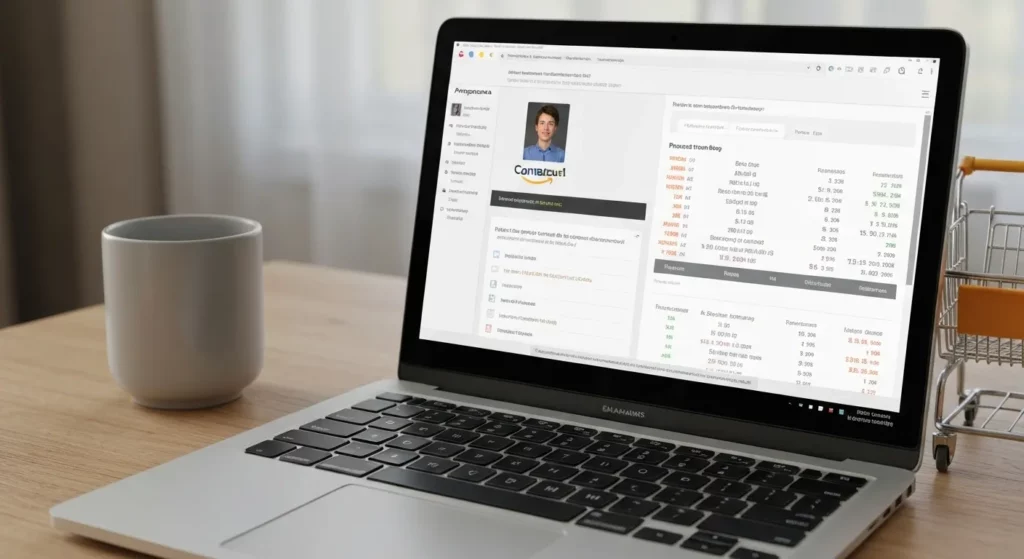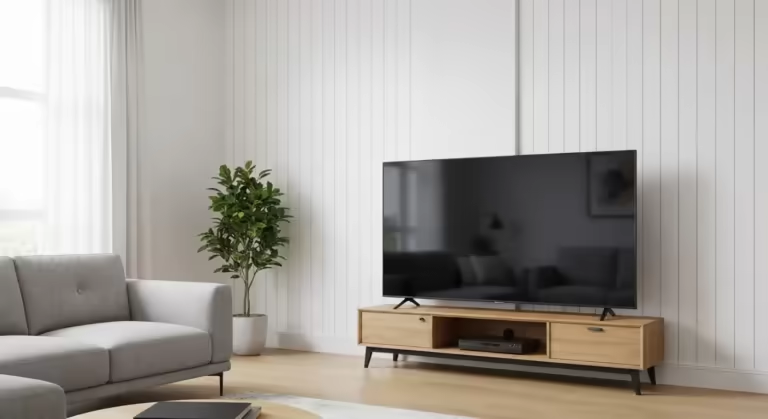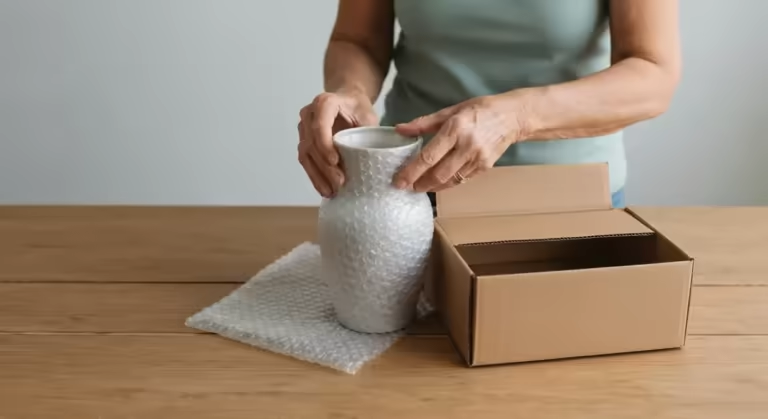Why the “No” budget method works
The traditional budgeting method of tracking every penny can be time-consuming and overwhelming for some people. For many, the mere thought of opening a spreadsheet to log a morning coffee purchase is enough to cause financial anxiety. This meticulous tracking, while effective for some, often leads to burnout and a feeling of failure if a single expense is missed. When you compare all that work with the most important areas to manage, you can mention how the no-budget method is ideal for people who want to avoid the rigid constraints of how typical budgets still need systems that encourage them to save and spend.
The “no” budget method is great for people who want to avoid any rigid constraints of a typical budget, but they still need a system able to encourage them to save and spend smart. It’s a philosophy built on simplicity and automation, focusing your energy on the big wins—saving consistently and covering essential costs—rather than getting bogged down in the minutiae. It acknowledges that life is unpredictable and that your spending will naturally fluctuate. Instead of fighting this reality, the “no” budget method works with it, providing a framework for financial control that feels less like a chore and more like a natural part of your life.

How the “No” budget method stands out among traditional budgeting
I’ll take a moment to explain the contrast between traditional budgeting and the “no budgeting method. While some readers may be familiar with the 50/30/20 method or zero-sum budgeting, others may wonder how this method works differently, so I’ll help you understand the appeal. Traditional methods often require you to assign every dollar to a specific category before the month even begins. This can create a sense of restriction and guilt when you inevitably overspend on groceries or decide on a spontaneous dinner out with friends. It’s a reactive system that often involves looking backward at your spending with a critical eye.
The “No” budget method brings no need to categorize every single expense; you can rather focus on keeping savings a priority and make sure fixed expenses are covered. When it comes to traditional budgeting, you can categorize every expense, such as groceries, entertainment, and utilities, and you can track your spending. The core difference is philosophical: traditional budgeting aims to control your spending through detailed tracking, while the “no” budget method aims to achieve financial goals by automating what’s most important and then trusting you to manage the rest. It liberates you from the mental burden of constant financial surveillance.
No budgeting means you won’t categorize every purchase, but instead you’ll focus on making sure you save first and cover your fixed expenses. Think of all the time and energy saved by not having to log every transaction or agonize over which category a purchase falls into. This freed-up mental space allows you to make more conscious, less stressed decisions with your discretionary income. It’s a proactive approach that sets you up for success from the start of the month, rather than a reactive one that tallies up your perceived failures at the end.
How to use the “No” budgeting method
- Pay yourself first
One of the easiest ways to make this method work is by setting aside money for savings the moment you get paid. This is the absolute cornerstone of the “no” budget philosophy. It reframes saving from something you do with leftover money to a non-negotiable fixed expense. Instead of waiting to see what’s left, you can transfer a portion of your income into savings first. This consistently builds financial security without thinking about it. By prioritizing your future self, you ensure that you’re always making progress toward your long-term goals, regardless of your spending habits in any given month.
Make sure you automate your transfers so they happen as soon as your paycheck hits your account. You can typically set this up through your bank’s online portal or even through your employer’s payroll system to have a portion of your check deposited directly into a separate savings account. In case you’re also working on paying off debt, you can use the same method to make extra loan or credit card payments. This automation removes temptation and willpower from the equation, making consistent saving and debt repayment effortless.
For example, if you earn $3,000 per month, you can transfer $500 to your savings account right away to avoid spending it before saving. If your income is variable, start with a conservative percentage you know you can hit every month, like 10%. Then, in months where you earn more, you can manually transfer an additional amount. The key is to establish a consistent, automated baseline.
- Use a separate account for fixed expenses
If you want to keep spending in check, you can consider having a separate checking account for all your essential bills, such as rent, utilities, insurance, subscriptions, and any other recurring payments. This strategy creates a financial firewall, protecting the money you absolutely need to cover your obligations. Calculate the total of all your predictable, recurring bills for the month and set up an automatic transfer for that exact amount from your main account into this dedicated “bill pay” account each payday.
You will never have to worry about accidentally dipping into your bill money for random purchases. Once the money is in the bill account, you can set up automatic payments for your bills from there and essentially forget about it. This dramatically simplifies your financial life, as you no longer need to perform mental gymnastics to figure out how much of your checking account balance is “safe” to spend.
This is a tip that works because when your fixed expenses are separated from your day-to-day spending, you will always know how much you truly have left to use for groceries, fun, and personal spending. The balance in your main checking account becomes your true discretionary fund. For example, if you have fixed bills of $1200 per month, you can transfer that amount into a dedicated account and not touch it for anything else. This clarity is one of the most powerful aspects of the “no” budget system.
- Track your balance, not your transactions
As mentioned before, it’s not about tracking every single expense. The focus shifts from micromanagement to mindfulness. All you need to do is check your bank balance before making purchases. If you have available money, you can spend it. If the balance is getting low, you’ll naturally slow down your spending. This simple act of checking in creates a natural, intuitive brake on overspending without the need for detailed ledgers or apps.
You can make it easy by setting up low-balance alerts on your banking app to know when you’re running low. For example, set an alert for when your balance drops below $200. This serves as a helpful nudge to be more cautious until your next paycheck. Better use a debit card instead of a credit card for your daily spending to keep an accurate, real-time view of your available funds. Credit cards can obscure your true financial position, making it easy to spend money you don’t actually have.
You can take a quick glance at your bank balance before heading out to shop or dine out. If your bank account’s balance is $600, you will need at least $400 to last until your next paycheck, so you’ll intuitively adjust your spending. Over time, you’ll develop a gut feeling for your finances. You’ll simply “know” whether a purchase is a good idea or not based on a quick mental check-in, freeing you from the constant need for calculation and analysis.
- Keep a spending buffer
Even if you feel like you’re managing your money well, keep in mind that unexpected expenses might pop up. It can be a last-minute birthday gift, a higher-than-usual utility bill (or a sudden craving for your favorite takeout). This is why it’s a smart idea to keep an extra $100-$200 in your account as a spending buffer. This isn’t your main emergency fund for major crises; rather, it’s a small cushion within your checking account to absorb minor monthly fluctuations without causing stress.
When you have a cushion, you won’t have to dip into savings and use a credit card for small and unplanned expenses. It prevents a minor unexpected cost, like a flat tire repair, from derailing your entire month. What you need to do if your balance drops close to your buffer amount is to slow down on spending until your next paycheck comes in. This might mean saying no to a dinner invitation or cooking at home for a few extra nights. The buffer gives you the flexibility to handle these small surprises gracefully.
- Create a simple spending rule
This method doesn’t require strict budgeting, but you can set some personal spending guidelines to help you stay on track. These aren’t rigid laws but helpful guardrails you design for yourself. The “Weekend Treat Rule” refers to one day a week you choose to indulge in something fun, like a nice meal or a small splurge. This intentionally builds enjoyment into your plan, preventing the feeling of deprivation that can lead to budget failure. The cash-only method talks about withdrawing a set amount of cash for personal spending and avoiding using your debit card for certain categories, like entertainment or lunches. The physical act of handing over cash makes spending feel more real and encourages mindfulness.
The wait 24 hours rule is all about waiting a full day to decide if you still want an item that you would usually purchase impulsively. This simple delay can be incredibly effective at curbing emotional shopping, as the initial “I must have it” feeling often fades, saving you from purchases you’d later regret. Another great rule is the “Large Purchase Conference,” where you commit to sleeping on any non-essential purchase over a set amount, like $100, before buying it. These simple rules provide structure without suffocating you.
- Review your spending at the end of each month.
With no strict tracking, you can do a quick review at the end of the month, so take a look at your bank account and ask yourself: This isn’t an audit; it’s a brief, low-stress financial “vibe check.” The goal is to spend just 15-20 minutes looking at your overall progress and making small adjustments for the following month. The key questions to ask are:
Did I have money left over, or did I overspend?
Can I increase my savings next month?
Did I make any unnecessary purchases that I can avoid going forward? Are there any patterns, like too many food delivery orders, that I want to change?
Am I happy with where my flexible money went, and does it align with my values?
Now reflect. If you notice you’re constantly overspending, you may need to increase the amount you set aside for savings on fixed expenses, or perhaps your discretionary spending habits need a small tweak. Maybe you need to adjust your spending buffer. If you have extra money left over, you can either boost your savings, make an extra debt payment, or reward yourself with a treat. This monthly check-in is a process of calibration, not judgment. It ensures your simple system continues to serve you as your life and goals evolve.

The importance of fixed expenses and savings goals
You can dive deeper into fixed expenses such as rent, utilities, and loan payments. These are the predictable, recurring costs that form the foundation of your financial life. Savings should be prioritized in your budget, and emphasize the importance of knowing exactly how much is needed for essentials each month. To get this number, review your last 2-3 months of bank and credit card statements and add up all the non-negotiable costs. You can make sure those are covered first, but from there, everything left is fair game for debt reduction and savings. This single number—your total fixed costs—is one of the most powerful financial figures you can know.
For the ones who are new to the “no” budgeting method, they are encouraged to set a minimum savings goal such as 10% and 15% of their income. This goal can be split between different priorities, such as building an emergency fund, saving for retirement in a 401(k) or IRA, and setting aside money for shorter-term goals like a vacation or a down payment. Before considering discretionary spending, this can help them avoid the temptation of overspending in months when their income is higher. By automating these savings goals, you treat them with the same importance as your rent or mortgage.
How do you track your spending (without the hassle)
The no-budget method doesn’t require detailed categorization of every single expense. This is a critical distinction: you are “monitoring” your finances, not “tracking” them in the traditional sense. This section can focus on how people track their expenses in a way that feels easy and not overwhelming. There are many apps and tools that can make it easier to keep track of their account balance without manually entering data every time. The goal is to have a quick, clear view of your financial position with minimal effort.
Tools such as Mint or YNAB can help you easily see your balance and spot any trend in your spending without needing to create a full budget. While these apps are known for their detailed budgeting features, you can use them in a “light” mode. Simply link your accounts and use the main dashboard as a central hub to view all your balances at once. Ignore the categorization and budgeting features. Alternatively, the simplest tool is often your own bank’s mobile app. Get familiar with its features, set up balance and transaction alerts, and use its homepage as your primary financial check-in point.
Mastering automatic transfers to build savings effortlessly
You can expand on the automatic transfers section and share how automatic savings help build financial security with little effort. Automation is the engine that powers the “no” budget method. It removes willpower, procrastination, and forgetfulness from the savings equation. Readers can struggle to prioritize saving, so automated transfers could bring security with little effort. If you struggle to prioritize your savings, automated transfers make it easy to pay yourself first. You can include the following tips.
Use savings tools like high-yield savings accounts or even apps like Acorns or Digit that round up your purchases to the nearest dollar and save the difference. A high-yield savings account (HYSA) is a fantastic destination for your automated transfers, as your money will grow faster than in a traditional savings account. Set up automatic transfers the day after you get paid. This timing is crucial—it ensures your savings are whisked away before you even have a chance to consider spending the money on something else. As a bonus tip, try to periodically increase your automated transfer amount, even by a small sum. After you get a raise, for instance, automate half of that new income directly to savings.
If you’re paying off debt, automate debt payments to ensure consistency. At a minimum, automate the minimum payments for all your debts from your dedicated “bill pay” account. Then, you can set up an additional automated payment to go toward your target debt (whether you’re using the snowball or avalanche method). This ensures you’re consistently making progress on your debt without having to think about it.
Dealing with unexpected expenses
The no-budget method has the potential for unexpected expenses, such as car repairs, medical bills, etc. It’s important to differentiate between a minor monthly “oops” and a true emergency. You should handle these situations without panic by keeping a small emergency fund of at least $500-$1000, cutting back on discretionary spending when an unexpected bill pops up, and making sure you have a “fun” budget if necessary, to not fall on the rigid side of the “no-budget.” Your small in-account spending buffer can handle a slightly higher utility bill, but your separate emergency fund is for a major car repair or a surprise medical deductible.
When a larger unexpected expense arises, the plan is simple: first, use your emergency fund to cover the cost without going into new debt. Second, pause any extra debt payments or additional savings goals temporarily. Third, create a plan to aggressively replenish your emergency fund by directing the money you were using for those extra goals back into your emergency savings until it’s full again. This structured approach prevents panic and keeps you in control.
How to use the method for debt reduction
The no-budget method is not typically geared towards intensive debt management, so it’s still possible to incorporate debt reduction. In fact, its simplicity can make debt payoff feel more manageable. You can highlight strategies like allocating leftover money after fixed expenses and savings. First, treat your minimum debt payments as essential fixed expenses and automate them from your bill pay account. This ensures you never miss a payment.
Next, after your automated savings and fixed costs are covered, you can decide how to use your remaining discretionary funds. If debt reduction is a high priority, you can adopt a “debt snowball” (paying off the smallest debts first) or “debt avalanche” (paying off the highest-interest debts first) approach. At the end of the month, whatever is left in your checking account before your next paycheck can be sent as an extra payment to your target debt. You could keep a holistic view of how to apply the method to different financial goals by making debt reduction a conscious, but not obsessive, part of your monthly plan.
Transition from a traditional budget to a no-budget
If you already use a traditional budget, you will understand how they can ease into the “no budget method. A sudden switch can feel jarring, so a gradual transition is often best. You can start with just one or two categories of expenses and savings and then gradually move toward the full approach. Here’s a simple, phased plan:
First, spend a month calculating your two most important numbers: your total monthly automated savings goal and your total monthly fixed expenses. Next, for your second month, continue your traditional budget but also create the automated transfers for those two amounts. Get a feel for operating with those core pillars in place. In the third month, let go of tracking your variable spending categories like “food,” “gas,” and “entertainment.” Simply rely on checking your main account balance. After a few months of this, perform your monthly “vibe check” and see if the system is working for you. You may find the freedom so liberating that you’ll never go back to line-item tracking.

The psychological benefits of “no” budgeting
When it comes to the mental and emotional aspects of budgeting, many people may feel stressed and guilty when following a strict budget. This approach can feel like a constant report card on your behavior, where every small “mistake” is highlighted in red. The “no” budget method can offer more flexibility and reduce the sense of deprivation, and it leads to a healthier relationship with money. It trades judgment for awareness and restriction for empowerment.
Reducing financial anxiety can improve overall well-being. By automating the important things, you dramatically lower the number of financial decisions you have to make each day. This reduction in “cognitive load” frees up mental energy and reduces the low-grade, persistent stress that comes from constantly worrying about money. You are no longer a micromanager of your own life; you are a CEO focusing on the big picture.
One of the biggest sources of stress in people’s lives? Money. When you need to micromanage every transaction, it creates constant anxiety, making you second-guess every purchase. Did that latte just wreck my budget? Can I afford this dinner out? This constant internal monologue is exhausting.
The “no” budget method eliminated the pressure by focusing only on the essentials:
- You know you’re saving money. (Because it’s automated.)
- You know bills are paid. (Because they’re handled in a separate, automated account.)
- You know what’s left is yours to spend as needed. (Because the math has already been done for you.)
This is a shift that can dramatically improve your mental well-being because you don’t feel overwhelmed anymore. No more spreadsheets and consuming budgeting apps, but also no stress of seeing unexpected expenses throw off an entire month’s plan. Moreover, you will feel in control of your money without feeling like it controls you. It fosters a sense of trust in yourself to make reasonable decisions with your discretionary funds.
The empowering feeling of knowing you’re setting yourself up for success
At the end of the day, financial confidence comes from knowing you’re moving in the right direction. Not only tracking every coffee or impulse buy, the “NO” budget can let you know that every month you are paying for your essentials. Growing your savings and avoiding unnecessary financial stress. This method helps you build positive momentum. Seeing your savings account grow automatically each month is a powerful motivator that reinforces good habits.
This is a method that can help you develop a healthy, long-term relationship with money because instead of feeling guilty for spending, you will know you’ve already handled what matters. You can enjoy a nice dinner out or buy a new pair of shoes without guilt, because you know that purchase isn’t compromising your ability to pay rent or save for retirement. You stop dreading money management, and it becomes effortless and intuitive. It becomes a tool to build the life you want, not a source of stress that holds you back.
You’re actively building financial security without restrictive rules. This sustainability is perhaps the greatest psychological benefit. A “perfect” budget that you quit after two months is far less effective than a “good enough” system that you can stick with for years. The “no” budget method is designed for the long haul.
Biggest takeaway
The “no” budget method is not just about money but about peace of mind and long-term financial stability. It’s a strategic shift from obsessive tracking to confident automation. By focusing your energy on the two pillars—automating your savings and isolating your fixed expenses—you create a powerful yet simple system that runs in the background. You’re not only spending; you’re saving without stress, covering expenses with ease, and setting yourself up for financial freedom.
If traditional budgeting has left you feeling frustrated, overwhelmed, or guilty, this approach offers a liberating alternative. It’s about building a financial system that fits your life, not forcing your life to fit a rigid system. Give yourself permission to simplify, automate, and focus on what truly matters. If you want to hear about my journey with money, this is How I Achieved Financial Freedom and Helped Others.














